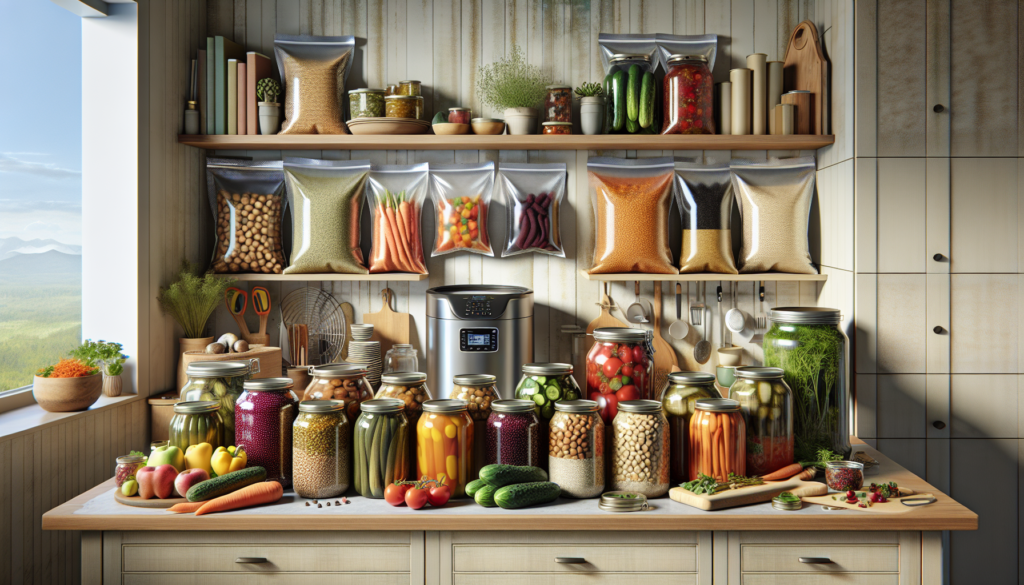
In an unpredictable world, having a reliable emergency food supply is crucial for ensuring the safety and well-being of you and your loved ones. While it’s essential to stockpile the basics, incorporating creative and practical food prepper ideas can make your emergency pantry not just a survival resource but also a comforting and varied collection that sustains both body and spirit during challenging times. Here’s a comprehensive guide on how to prepare for emergencies with inventive food prepping concepts while incorporating items commonly found in well-stocked emergency pantries.
To start, it is vital to establish a solid foundation of non-perishable foods. The likes of canned goods, dried pasta, rice, and beans are staples, forming the backbone of any emergency pantry. These items are versatile, inexpensive and have long shelf lives. However, merely having these items is not enough. How these are organized and used creatively can significantly enhance your preparedness.
Wire racks, airtight containers, and vacuum sealing can help maximize space and preserve food quality. Consider investing in Mylar bags and oxygen absorbers for dry goods like grains and legumes to extend their shelf life. Label everything with dates to ensure rotation and minimize waste. These storage solutions not only keep your food fresh longer but also ensure your pantry remains orderly and accessible.
For long-term survival, incorporate freeze-dried or dehydrated foods. These options are lightweight, retain nutritional content, and can be rehydrated easily with water. From fruits like berries and apples to vegetables such as broccoli and peas, these foods add essential vitamins and variety to meals. A sprinkle of dehydrated veggies can transform a plain pasta dish into a nutritious, satisfying meal.
In times of stress and uncertainty, familiar comfort foods can lift spirits. Stock up on items such as peanut butter, whole-wheat crackers, and even chocolate. Granola bars, power bars, and powdered drink mixes can serve as quick energy boosts. Consider including instant pudding or jello—simple treats with long shelf lives that can provide a psychological lift when morale is low.
Experiment with combining basic pantry items to create wholesome meals. For instance, canned beans and diced tomatoes can create a flavorful chili, especially when paired with seasonings like cumin or chili powder. Dried pasta paired with powdered cheese and shelf-stable milk makes a hearty mac and cheese, while adding canned tuna or chicken elevates it further. The key is in using spices and condiments like bouillon cubes, vinaigrettes, and even mustard to add depth to meals without needing fresh ingredients.
For those looking to go further, consider canning your own fruits and vegetables or engaging in fermentation practices, like making sauerkraut or pickles. Not only does this ensure a personalized supply of food, tailored to your taste, but it also introduces probiotics, which are beneficial for gut health. Home-canned goods can last up to a year or more, providing variety and nutrition.
Emergency food supplies are often low in protein. Beef jerky, canned fish, and hearty legumes can help fill this gap. However, thinking outside the box could lead you to consider powdered eggs or plant-based protein powders, which are adaptable in many recipes and require minimal preparation.
Don’t overlook the necessity of potable water. Mere stockpiling of bottled water isn’t enough. Invest in water purification systems to ensure a steady supply. Devices like portable water filters or purification tablets are invaluable assets, especially when tap water becomes unavailable.
Finally, an often-overlooked aspect of preparedness is the regular updating of supplies. Perform rolling inventories every six months. Use up items nearing expiration, and replace them promptly. This not only prevents waste but keeps your prepper pantry in top shape, ready to tackle any unforeseen event.
In conclusion, building an emergency pantry is about more than just amassing food. With creativity and planning, your pantry can be a lifeline offering nutrition, comfort, and peace of mind. These food prepper ideas not only equip you for emergencies but also empower you to face challenges with resilience and resourcefulness. Remember, the ultimate goal is to create a balance between practicality and sustenance, ensuring food security that’s as nourishing as it is comforting.